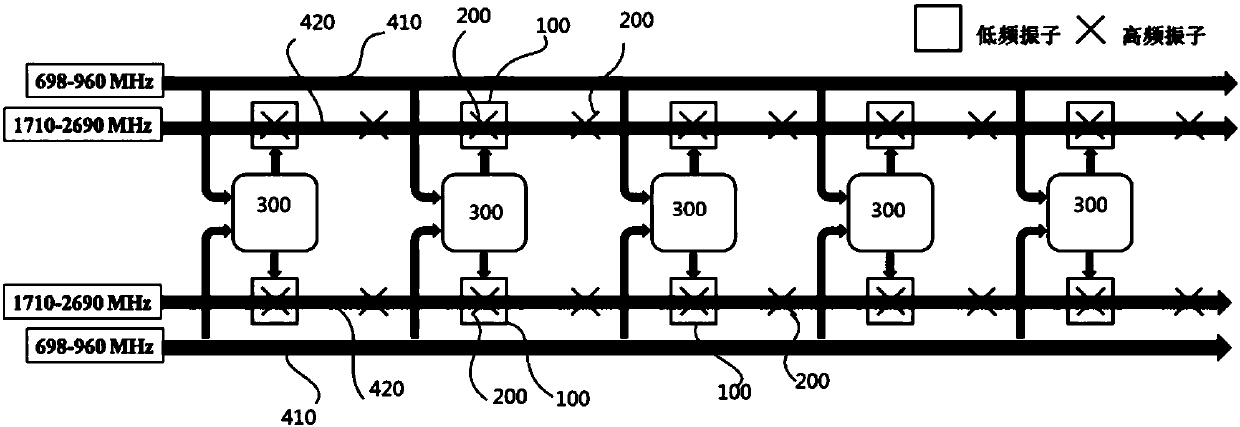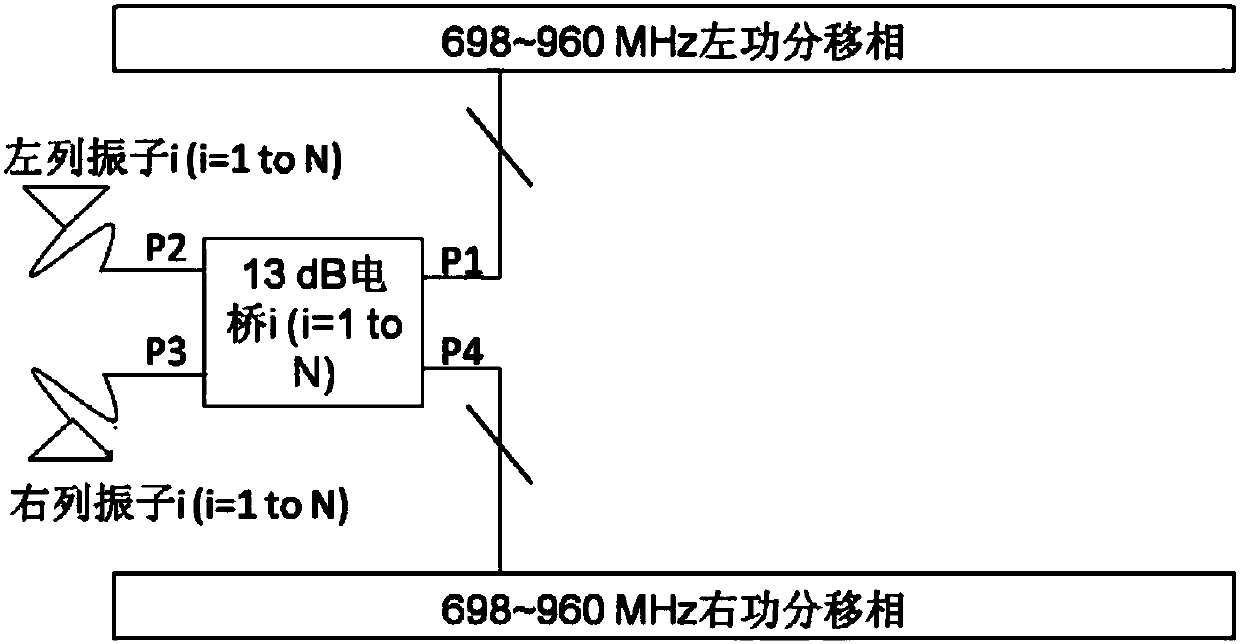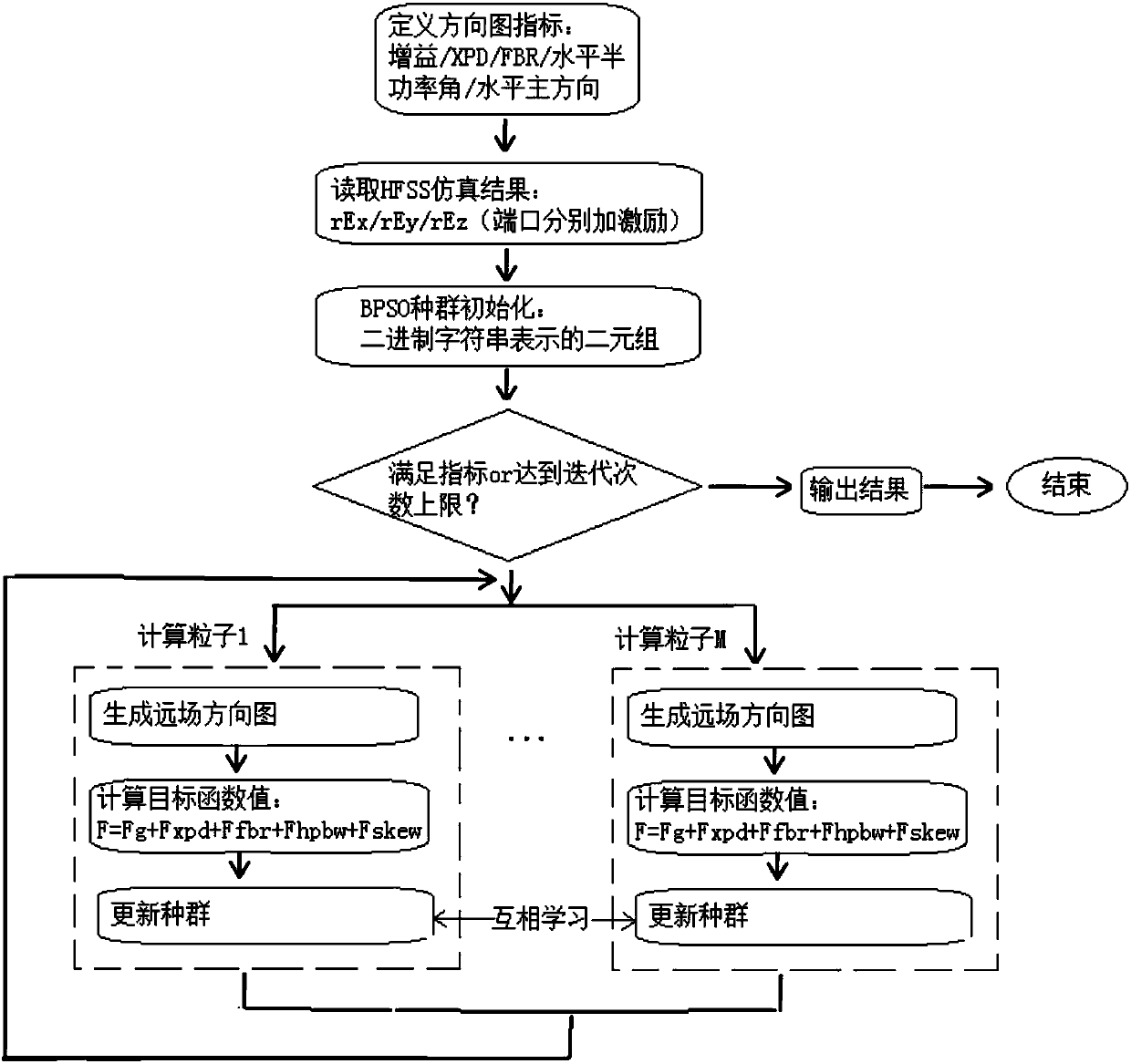Base station antenna and wave beam shaping method therefor
A base station antenna and beam shaping technology, applied in the directions of antenna, antenna coupling, antenna array, etc., can solve the problems of the horizontal half power angle not meeting the design index, the half power angle is too narrow, and the optimization parameters are too many, so as to facilitate batch deployment, The effect of improving consistency and expanding the design range
- Summary
- Abstract
- Description
- Claims
- Application Information
AI Technical Summary
Problems solved by technology
Method used
Image
Examples
Embodiment Construction
[0027] see figure 1 , a schematic diagram of an embodiment of the base station antenna of the present invention, which includes at least two independently electrically adjustable radiating element arrays, each of which includes a high-frequency radiating element 200 and a low-frequency radiating element 100, and the dual-frequency coaxial array antenna also includes The cables 410 and 420 for feeding the high-frequency radiation unit and the low-frequency radiation unit respectively, wherein the cable 410 for feeding the low-frequency radiation unit 100 is connected to the low-frequency wires in the two rows of radiation unit arrays through the weak coupling bridge 300 The radiating elements are connected, and the beams of the radiating elements are shaped through the weak coupling bridge 300 . Furthermore, the weak coupling bridge 300 is connected to the phase shifters of the feed cables of the two antenna arrays. The low-frequency radiation unit mentioned herein may be a me...
PUM
 Login to View More
Login to View More Abstract
Description
Claims
Application Information
 Login to View More
Login to View More - R&D
- Intellectual Property
- Life Sciences
- Materials
- Tech Scout
- Unparalleled Data Quality
- Higher Quality Content
- 60% Fewer Hallucinations
Browse by: Latest US Patents, China's latest patents, Technical Efficacy Thesaurus, Application Domain, Technology Topic, Popular Technical Reports.
© 2025 PatSnap. All rights reserved.Legal|Privacy policy|Modern Slavery Act Transparency Statement|Sitemap|About US| Contact US: help@patsnap.com



